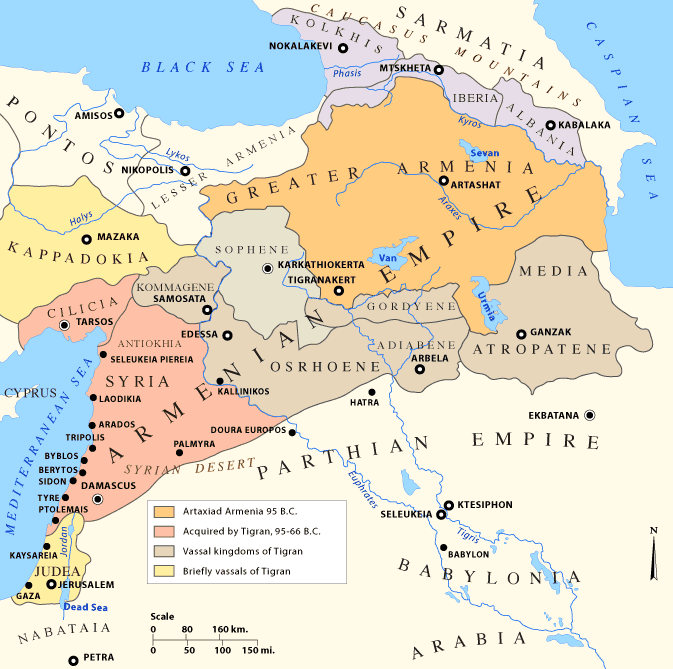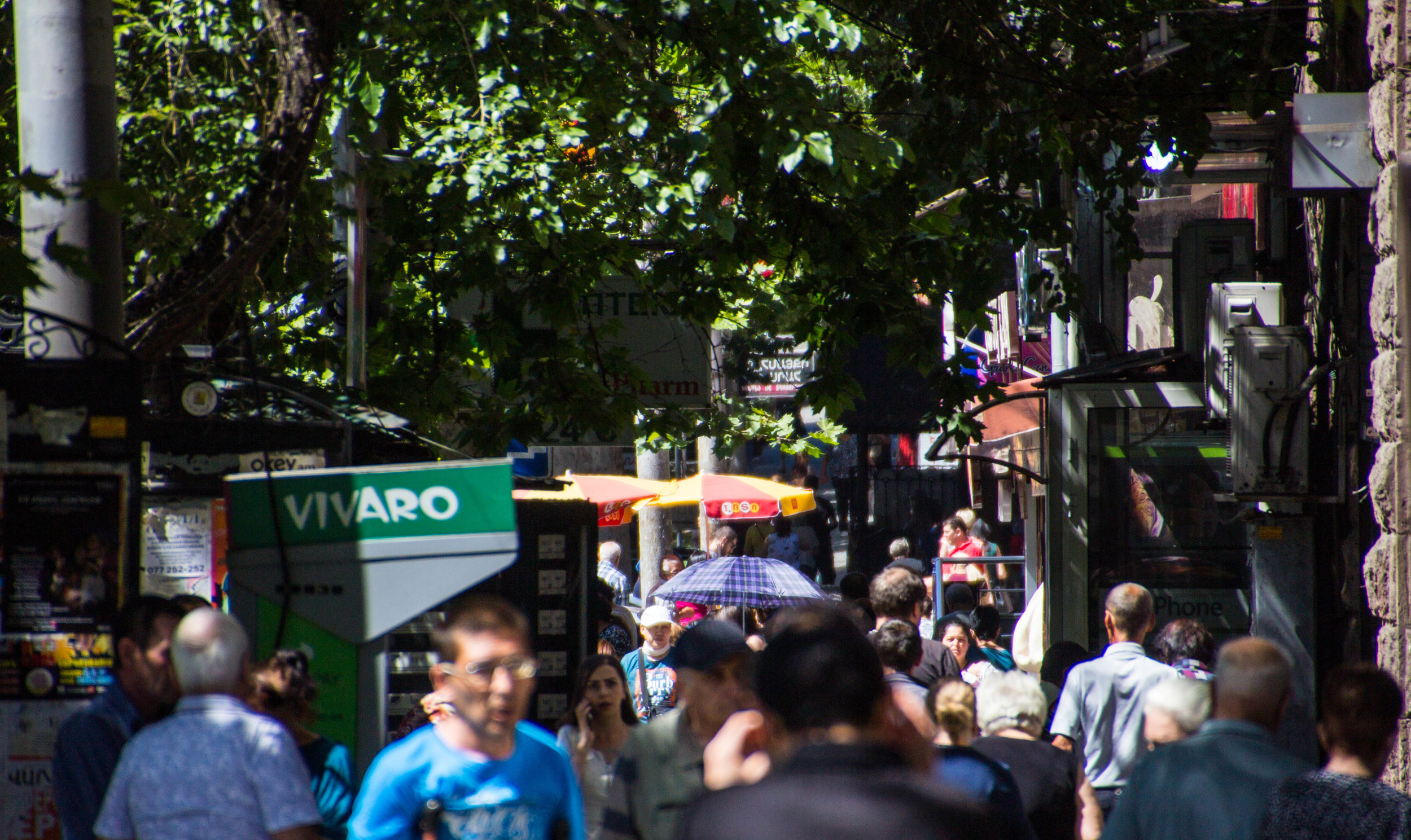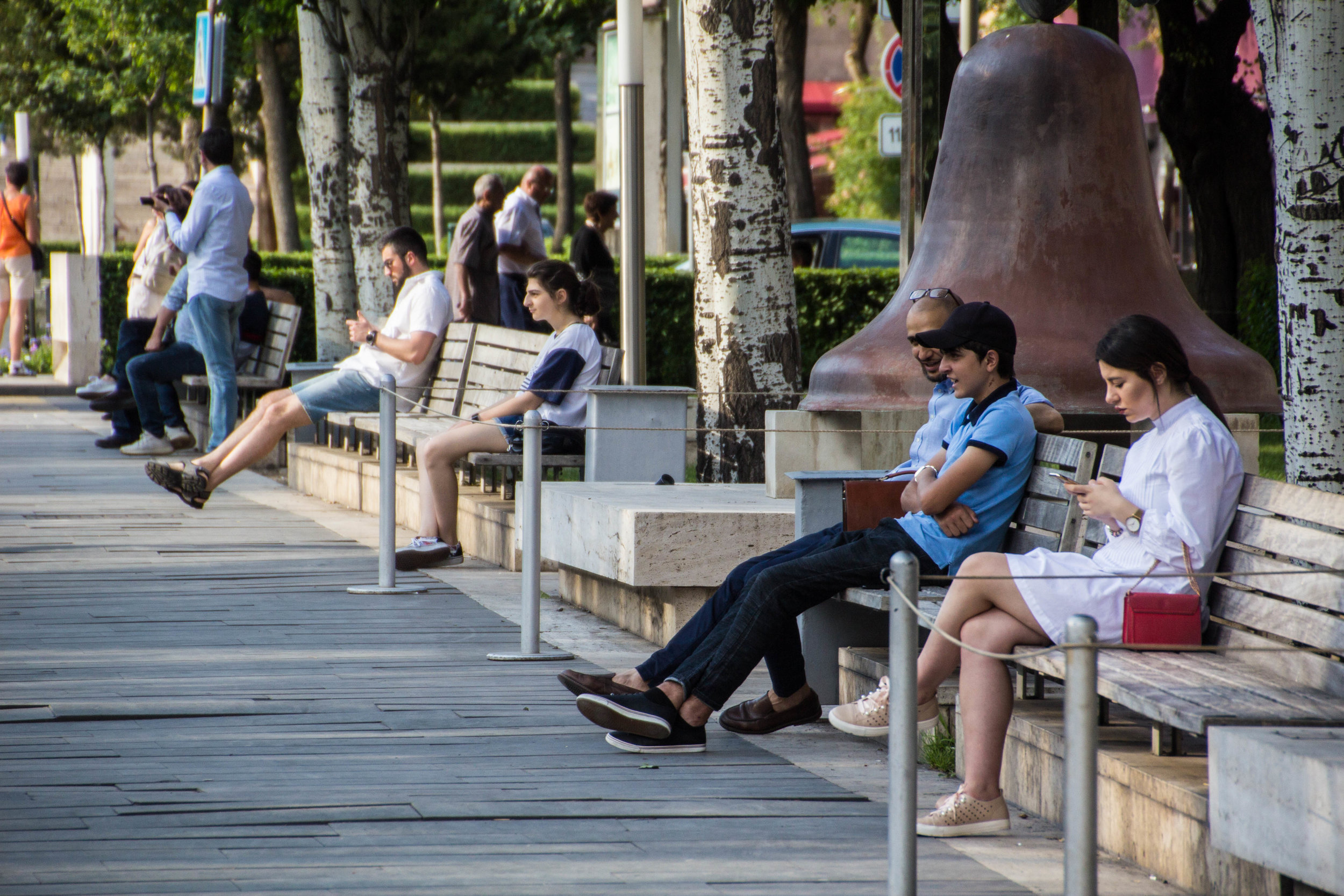I don’t think I realized what an obscure place this was going to be until after I had already arrived. In travel, it’s not hard to tell when you’re swimming upstream or going against the grain. Suddenly you find yourself on weird layovers, taking little buses out onto the tarmac to board small planes, and surrounded by people whose clear connection to the flight’s destination cast a painfully bright light on your own lack of connection. Inevitably, people start asking you questions that sound something like this: “Sorry, but why are you coming here?”
I did not expect Armenia to be one of these places… but it definitely was. And it left a STRONG impression on me.
INDEX:
(click one to zoom down)
1. Historical / Cultural Context for Armenia & Yerevan
2. First Impressions From Yerevan
3. Points of Interest In Yerevan
Armenia 101
This history of Armenia goes back just about as far as history can go. It is thought to have been founded in 2107 BC in the Bronze Age, although the next few thousand years would see quite a few different civilizations rise and fall within the area that was historically considered to be “Greater Armenia.” You see, Greater Armenia, sometimes referred to a “Old Armenia,” was actually a pretty big area. Historically, its boundaries have looked something like the graphic shown here, and there have been numerous reincarnations of this nation’s borders within the last ~4,000-odd years. However, it was the 6th century BC when the first geopolitical entity specifically using the name Armenia came into being, and that name has had a strong regional presence ever since. Indeed it was only recently that Armenia has been reduced to the small size shown on maps today. The story of how we got from Old Armenia to New Armenia is something that we’ll be unpacking here, and also in a forthcoming article on the Armenia Genocide. Yeah, did you think I was going to leave Armenia without talking about that? Nah.
The thing about Armenia is that, over the course of history, it has often found itself under the influence of larger neighboring powers. To name a few, Armenia has been a part of the Persian, Mongol, Roman, and Ottoman Empires… and most recently, the Soviet Union. So it’s not a nation that has had the opportunity to stand on its own two feet very often. The fact that Armenia is today, in 2019, a free-standing, sovereign nation is a relatively recent development.
The capital of Modern Armenia is Yerevan. It was founded in 782 BC, which makes it the world's oldest city to have documented the exact date of its founding. So you’d assume that it has always been a city of significance… right? Well when I was leaving Armenia, I shared a taxi with an Armenian American whom I had befriended in the Georgian customs line that was commenting on how most historically significant Armenian cities are now located in modern-day Turkey. He told me that Yerevan hadn’t been much more than a large town until it was selected as the capital of the new Armenia in 1918. Of course, that incarnation of Armenia only lasted for about 2 years before the Soviets took over in 1920, so much of the industrialization and expansion of this city happened under Soviet rule and has continued since the collapse of the Soviet Union.
Modern Armenian history generally starts with the absolute Hell they endured as part of the Ottoman Empire, which ultimately culminated in the Armenian Genocide. The next article in the queue will take a deep dive into this chapter of Armenian history, so I’m going to skip ahead for now to Armenia as part of the USSR.
☭ Soviet Armenia ☭
Although it was controversial at the time, Armenia was not an entirely unwilling inductee into the Soviet Union. Armenia had been on the brink of total destruction just a few years earlier in their traumatic final years in the Ottoman Empire, and in the subsequent Turkish-Armenian War. Eastern Armenian was already part of the Russian Empire, and with the borders of neighboring larger powers in violent flux all around them, the prospect of Soviet membership came with a lot of up-side. So they joined!
As a part of the Soviet Union, Armenia existed under the umbrella of the “Transcaucasian Socialist Federative Soviet Republic” a.k.a. the TSFSR. The other entities that existed alongside Armenia in the TSFSR were Georgia and Azerbaijan. Each was its own SSR (Soviet Socialist Republic). If you don’t know, “SSR” was roughly the Soviet equivalent of American states, with most former Soviet Republics maintaining roughly the same borders as a sovereign nation as they did as an SSR. And as an SSR, Armenia got some MUCH needed relief. Relatively speaking, they were stable, prosperous, and well-fed under Soviet rule. However, Armenia’s Soviet years were not without a few speed bumps.
In the early years of the Soviet Union, Armenia’s fortunes were mostly tied to those of everybody else under Soviet rule. WWII saw the conscription of 500,000 Armenians (about 1/3rd of the population) to fight in the Red Army on the Eastern Front. About 175,000 died of them died, but to keep that in perspective, this is just a drop in the bucket of the total 26 MILLION Soviet citizens that died during this conflict. Things were hard everywhere. And things pretty much stayed hard until Stalin died in 1953. Then things got better for a little while, but soon took a hard turn for the worst.
The Nagorno-Karabakh War
Ethnic tensions had been quietly (and sometimes not-so-quietly) simmering since the mid-1960s over a large Armenian enclave called Nagorno-Karabakh. Finally, in 1987, violent in-fighting began between the two groups. Soon Azerbaijan and Armenia were literally at war with one another, and the violence was escalating quickly. And remember, both of these were still SSRs, so this would technically have been a Civil War within the Soviet Union. Like if Texas went to war with Oklahoma.
I’m not gonna sugar-coat this—there were ethnically-motivated atrocities committed by both sides in the Nagorno-Karabakh War. Overall I’m definitely an Armenia-sympathizer… but this got messy in a hurry. Soon Moscow sent Soviet troops to restore order to the region, but to read through the role that the Soviets actually ended up playing in this conflict, it’s very easy to forget that they had been sent to restore the peace. Often they seemed to be operating simply as a 3rd combatant in the conflict. Apparently they literally laid siege to the Azeri capital of Baku (which was full of civilians) at one point.
Meanwhile, with this messy conflict in full-tilt, disaster struck. In December of 1988, a massive earthquake rocked Armenia. It is estimated that as many as 50,000 people died, with another 130,000 injured. In addition to the normal desperation and tragedy wrought by this these types of natural disasters, this introduced an added layer of complications by knocking out much of Armenia’s power and food processing capabilities. And still, the fighting continued.
By 1990, in addition to being at war with their Azeri neighbors, Armenia was also in open revolt against the Soviets. They declared their independence on September 21 1991, and 2 months later the Soviet Union collapsed. So that was it! Armenia was an independent nation again, and was instantly fighting for its life. I’ll get into this conflict a bit more in a forthcoming article but I’ll do my best to summarize for now.
Turkey and Azerbaijan imposed a blockade on Armenia that all but crippled its economy during this conflict. In order to hold its own against Azerbaijan, Armenia was forced to direct all of its resources to the front lines. For Armenian citizens living back in Yerevan and the surrounding areas, they were essentially living through the Great Depression, with electricity often only available for about 1 hour per day. People who lived through this time recall those moments in the day when the power would come back on, describing a neighbor yelling from the rooftop. Everybody would drop what they were doing and run back into the house to try to do some laundry, cook some food, make a phone call, or whatever else they needed power for. Remember, this is not ancient history—this is the early 1990s. People were pretty much as dependent on electricity as they are now. So while the war raged on, causing food and power shortages nation-wide, many people were still trying to cobble their lives back together from the literal rubble of this earthquake. It was not a good time to be an Armenian.
I’ll fast-forward through a few years of horribleness to 1994, when finally Russia brokered a cease-fire between the two fledgling nations. No actual resolution to the conflict has been achieved to date. In fact, the two nations are still sort of at war with one another, which is also something I’ll explain more in a forthcoming article, but the important thing is that Armenia was finally able to turn its attention to getting on its feet as a nation. Which they have done.
Armenia & Yerevan Today
So all that may have painted kind of a bleak picture of Armenia. I mean, yikes, right? There are very few nations that have had a tougher go of things than Armenia. BUT, the Armenia of today is very safe. And it’s developing quickly. It still has some rough edges, especially once you get into more rural areas, but Yerevan feels solidly middle-class. There are bars and restaurants everywhere, nice cars driving through the streets, well-dressed young people going about their business, and all of the amenities that you expect of a wealthy “1st-world” nations. The tap water is apparently some of the cleanest in the world, and there is actually a cool arts scene developing here as well. If you were super uninterested the history and context surrounding this place, it would be easy to show up in Yerevan and not think twice about the road that led here. Which leads to me to something I really admire about Armenia.
Armenia is larger than life. This is a nation and an identity that has succeeded against ALL odds. There are almost three times as many diaspora Armenians scattered around the world than those who actually live in Armenia, which is pretty crazy. And while the origin story behind that diaspora is heartbreaking (again, forthcoming article), the global presence it created for this culture is insane. It’s almost like the harder Armenia gets hit, the stronger it becomes!
During Bourdain’s visit to Armenia, he said something that has really stuck with me: everybody knows an Armenian. It’s so true! You probably have at least one Armenian friend. And if you don’t, have you ever heard of the Kardashians? They’re Armenian. Or how about Cher? Yup, also Armenian. And how about the band System of a Down? Again, Armenian.
I guess the point I’m making is that Yerevan isn’t as obscure a place as it might seem. Set aside the fact that Armenia only just broke the 1 million visitors per year mark (which is like, nothing), and try to think of this like your it’s friend’s hometown! Because for a lot of you, it probably is!
OK ENOUGH BACKGROUND. Let’s jump in. Here’s an interactive map of Yerevan for some context 👇
Around Yerevan
Arriving in Yerevan’s Zvartnots International Airport immediately conjured images of Israel. Not that I’ve ever been to Israel, but the two countries have lots of similarities, starting with the imagery. Prior to my departure, I had gone round and round trying to decide whether or not Armenia is part of the Middle East… before finally deciding that is definitely not. But when I actually got here, it felt a lot less clear cut. Soon I was speeding through the dusty, brown haze on the outskirts of Yerevan in the passenger seat of a self-proclaimed taxi driver who was blasting music that sounded exactly like standard Middle Eastern techno.
“Well, I guess I’m just a few hours away from Iran at this point, so I guess this makes sense.” I thought to myself.
Always present on the horizon was the legendary Mount Ararat. You’ll be seeing a LOT more of this mountain during this series on Armenia. This is the mountain in the Bible where Noah’s Ark is said to have finally touched down after the flood waters receded. So when Indiana Jones-type people set out looking for the remains of Noah’s Ark, they come here. Supposedly there have been a few hundred people that have seen whatever’s left of the Ark since the late 1800s, but the string of accounts of Ark sightings up here start to feel a lot like Big Foot or the Loch Ness Monster the further you read. To date, there is no conclusive scientific evidence that the Ark is actually up there…. yet.
Anyway, although it is now technically located in Turkey (like many other ancestral Armenian touchstones), it still basically serves the role of Armenia’s mascot. You’ll see images of this mountain everywhere around Armenia. The fact that is almost never out of sight is a testament to the immense size of this mountain, as well as a reminder of how small a country Armenia really is. On the road in from the airport, I saw a nice picture out the window with Yerevan rooftops and Ararat in the background, and was later able to find my way back to take the picture. Here are a couple of those pictures:
However, once we got a bit closer to the city center, the vibes quickly became more difficult to categorize. Fast forward a few hours and I was in my happy place: out on the streets with my camera. I was eager to jump to conclusions, but the further I walked the less I sure I became of what I thought I knew. Some times I would pick up Middle-Eastern vibes from open-air restaurants in city squares, other times I would get European vibes from the little Armenian bakeries tucked away somewhere on every block. And the architecture on those blocks sometimes seemed to be European-adjacent… but then on the next block the buildings were giant, brutalist concrete blocks, serving as a striking reminder of Armenia’s Soviet past.
Sidebar: How long will it be before things stop feeling “Post Soviet”? For an empire that existed for such a short time in history (only 69 years), its legacy seems like it punches well above its weight. Like, Armenia hasn’t been a part of the Soviet Union in almost 30 years. Why is this still such a powerful descriptor? I suppose this kind of system of classification must have been common after the collapse of every empire in history. I bet after the fall of the Roman Empire people were saying that things felt “Post-Roman” for centuries.
Over the course of my time here, I began to realize an error in the way I had been thinking about Armenia. I arrived here desperate for a point of comparison.
“________ feels like it belongs in Central Asia”
“But ____________ looks like something straight out of the Soviet Union”
“_________ actually feels kind of European”
“Okay but _________ is giving me definite Middle Eastern vibes”
But Armenia does not fit easily into any box. It is not easily compared. In the future, I’m going to be comparing things TO this place. Never the reverse.
Anyway, to walk around Yerevan in the middle of the summer, the streets never feel crowed, but you’re never alone. The people walking along side you are a combination of a more weathered, older generation, and a fashion-forward, well dressed younger generation. It’s easy to see that anybody over a certain age has been through some stuff, which lends a heaviness that does not seem to be present in the young people. On the contrary, from what I can tell, the young people of Armenia are thriving. Many of them speak great English, and while they clearly come from a society where traditional religious beliefs carry a ton of weight, there isn’t much pretense in speaking with them.
Below are an assortment of my favorite pictures from walking around Armenia. Included in this gallery is the Mother Armenia statue, Republic Square, and a bunch of other smaller landmarks.
In walking around Yerevan, there was also a lot of really cool street art! And y’all know I love to add to my collection of street art posts whenever I can, right? Well unfortunately I didn’t feel like this quite rose to the level of getting it’s own showcasing, but I still want to share with you some of my favorite pieces. Many of these seems to have been commissioned by the Modern Art Museum of Yerevan. I went to the museum, but wasn’t blown away enough to justify making this post any longer than it already is. So all you get today is the street art. 🤷♂️
The Yerevan Cascade
The most famous landmark in Yerevan, except perhaps for the the Genocide Memorial, is the Yerevan Cascade. The other fixtures on the list of tourist attractions in this city pale in comparison. What is the Yerevan Cascade? Basically it’s a giant staircase that climbs a big hill that looks out over the city of Yerevan, with Mt. Ararat in the background. It is the quintessential picture of this place, so obviously I had to go snap some photos. Y’all know I’m always on the lookout for high-up places where I can take pictures looking out over cities during sunset. Often I’m forced to improvise these things (with varying degrees of success), but Yerevan served it up on a silver platter for me. Of course I was going to come here for sunset!
Arriving at the Cascade by foot, the first thing you’ll come to is a large plaza full of fountains, statues, and benches. This plaza is called Alexander Tamanyan Park, and it is lined with 2 blocks of restaurants and bars on either side. I passed through this area many times during my stay in Yerevan, and this park was always packed with people.
The Cascade itself was designed by the architects Jim Torosyan, Aslan Mkhitaryan, and Sargis Gurzadyan, Construction began in 1971 and was completed in 1980. Just kidding. It’s actually still not done—there’s been a massive crater of a construction site sitting at the top of this thing for almost 40 years now. There was more work done in the mid-2000s, but I believe that was mostly focused on created the elaborate series of escalators and art installments that operate just beneath the surface of this monument, ferrying lazy people like me up and down all day so they don’t actually need to walk up all those stairs. In the gallery below, you’ll see a couple shots of those escalators. Honestly in the summer heat, those things were a Godsend.
My first night in Yerevan, I walked over to the Cascade in search of the escalators I had hear so much about. However, when I arrived, it took me 2 flights of stairs to locate the entrance to this subterranean world. Once I found my way in, it all felt super obvious. So I road my way to the top of the Cascade, and when I got there… I found the construction site.
Apparently there had been a few cool ideas from the aforementioned architects. There were plans to turn this space into a concert hall, or a perhaps a museum… but the project was plagued by financial overages and disagreements. Eventually things sputter out… leaving 9.8 hectares of nothing sitting at the top of Yerevan’s largest monument. Insert Parks & Rec joke about “The Pit” here. Below you’ll see a few artists’ renderings of what this project could have looked like… and also a picture of what it actually looks like right now. Can you guess which is which? 😦
40-year-old construction site aside, the classic picture of Yerevan with Mt. Ararat towering in the background is taken right here. But on this day, I was not lucky enough to be blessed with clear skies. There was a small rain storms moving across the plains directly in front of the mountain. It made for some incredible skies, but ultimately I would have to circle back on a clearer night.
Fast forward a few nights into the future, and the skies were clear as could be! I meandered through the city, over to Alexander Tamanyan Park, up the series of escalators, finally arriving at the top of the Cascade. With the sun sliding lower in the sky, tourists, as well as young Armenians on dates and with groups of friends all found places to sit amongst each other on the limestone stairs as if they were seats in a move theater. The closer we got to sunset, the more crowded these stairs became. Here are a couple shots of the stairs as the light began to change…
Between photos, I sat amongst the crowd on the stairs in silence. The wind coming across the plains from Mt. Ararat quickly lifted the ambient noise of the dozens of conversations in foreign languages swirling around me, and whisked it away with ease. The soft noises of organism that is Yerevan came to me by way of that same wind, and quickly disappeared as well.
Just then I ran into a few new friends up here, and just like that my evening became a lot less silent. Oh how I missed solo travel. Once you make a few friends in a place like Yerevan, you’re bound to run into them everywhere. In fact, I was still bumping into some of these same people when I got to Georgia!
Now let’s turn towards the city and watch the sun go down…
Dinner: Lavash
Address: 21 Tumanyan St, Yerevan 0001, Armenia
Hours: 8:30am - 12:30am | Everyday
People rave about Armenian food, so I wanted to make a point of getting dinner in at least one nice restaurant during my stay in Yerevan. After some Googling, I landed on a place called Lavash that seemed to be receiving the universal praise of everyone that had ever set foot in Armenia. Even the woman I sat next to on the plane (who hadn’t even lived in Yerevan since the opening of this restaurant) knew about it. This place is pretty famous apparently! So a group of us called ahead and made a reservation.
One weird quirk about Armenia is that there are zero laws about smoking in public. So every restaurant, bar, and bakery in Yerevan is smokey, tobacco-soaked coffin. America definitely has a lot wrong with it… but one area where we’re killing it is with public opinion on smoking. I HATE cigarettes, and when I’m at home I’m not alone in that. But in Yerevan… I was quickly forced to accept the fact that I was going to smell like shit for the duration of my visit. Later I would discover that smoking laws here had actually already passed, but would not go into effect until September 2019. Just a few months away!
Anyway, smokiness aside, the food here was awesome. The menu was so massive that I’m re-intimidated just thinking about it, but we all went with safe, simple options involving lots of meat (as is traditional in Armenia) and we were all very satisfied. We also ordered a great bottle of wine that came from vineyards in the Nagorno-Karabakh region, which I thought was interesting. The Caucasus region actually has a thriving wine culture, even in war-zones apparently. Here’s a few pictures of the restaurant:
I had a great time in Yerevan. I felt extremely safe and at ease here. The people were very friendly. English was widely spoken. Everything was cheap. The food was amazing. Minus the detail about smoking laws, it was all incredible! I was extremely impressed that a place that had gone through so much in the recent past could feel this way. Every detail was and is a testament to the strength of these people and their culture.
Up next we’re going to take a deep dive into the darkest chapter of Armenian history, but before we do that, let me leave you with a track of the day that I think you’ll agree is thematically appropriate.



















































































































